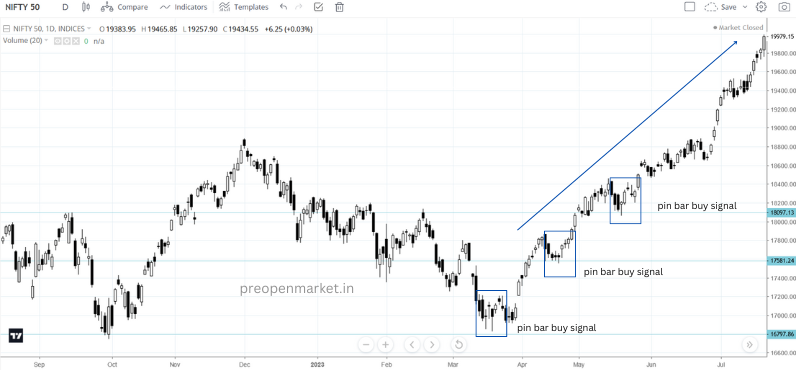Price Action Breakout Strategies
trading potential trend continuation or reversal opportunities
Price Action Breakout Strategies
Price action breakout strategies involve identifying and trading potential trend continuation or reversal opportunities when the price breaks out of a well-defined support or resistance level, chart pattern, or consolidation range. Breakout strategies aim to capitalize on strong price movements that occur when the price breaks through a significant level or pattern.
To use price action breakout strategies, you will need to identify key support and resistance levels on your charts. Once you have identified a potential breakout level, you will need to wait for the price to break above or below the level to confirm the signal. You will also need to use a stop loss to limit your losses in case the trade goes against you.
Here are some common price action breakout strategies:
-
Breakout of Horizontal Support or Resistance:
- Traders identify key horizontal support and resistance levels on the price chart.
- When the price breaks above a resistance level or below a support level, it can signal a potential breakout.
- Traders enter positions in the direction of the breakout, anticipating further price movement.
-
Triangle Breakout:
- Triangle patterns, such as ascending, descending, and symmetrical triangles, indicate periods of consolidation before a potential breakout.
- Traders wait for the price to break out of the triangle pattern and enter trades in the breakout direction.
-
Rectangle Breakout:
- Rectangle patterns form when the price moves within a horizontal range.
- A breakout above the upper boundary signals potential bullish momentum, while a breakout below the lower boundary indicates potential bearish momentum.
-
Cup and Handle Breakout:
- The cup and handle pattern forms after a price rise (cup) followed by a consolidation (handle).
- A breakout from the handle's upper boundary suggests a potential bullish continuation.
-
Flag and Pennant Breakouts:
- Flag patterns are small rectangular patterns that form after a strong price movement.
- Pennant patterns are small symmetrical triangles that form during a short consolidation.
- Traders enter positions when the price breaks out of the flag or pennant pattern.
-
Range Breakout:
- A range breakout occurs when the price breaks out of a trading range or channel.
- Traders anticipate a strong price movement in the breakout direction and enter trades accordingly.
-
Volatility Breakout:
- Traders look for periods of low volatility followed by a sudden increase in price volatility.
- A breakout from the low volatility phase can signal a potential significant price movement.
-
Round Number Breakout:
- Round numbers (e.g., 1.0000, 100.00) often act as psychological support and resistance levels.
- A breakout above a round number resistance or below a round number support can lead to strong price movements.
-
Moving Average Breakout:
- Traders watch for breakouts above or below moving averages to confirm potential trend continuation or reversal.
-
Price Channel Breakout:
- Channels are formed by drawing parallel trendlines around price movements.
- A breakout above the upper channel line or below the lower channel line can signal a potential trend change.

When trading price action breakout strategies, it's important to wait for confirmation of the breakout through significant price movement and volume. False breakouts can occur, so traders often use techniques like placing stop-loss orders and waiting for pullbacks before entering trades. Combining breakout strategies with other technical analysis tools can enhance the accuracy of trading decisions.
Risks of using price action breakout strategies
There are a few risks associated with using price action breakout strategies, including:
- False breakouts: The price may break out of a level, but the breakout may not be sustained. This can lead to losses if you enter a trade too early.
- Market volatility: The market can be volatile, and even the best price action traders will experience losses.
- Risk of ruin: If you use too much leverage, you could lose more money than you can afford.
How to reduce the risks of using price action breakout strategies
There are a few things you can do to reduce the risks of using price action breakout strategies, including:
- Use multiple time frames: It is best to use multiple time frames to confirm price action signals. This will help to reduce the risk of false breakouts.
- Use a stop loss: Always use a stop loss to limit your losses in case the trade goes against you.
- Be patient: Don't enter a trade just because a price action signal is triggered. Wait for a good opportunity to enter a trade.
- Practice on a demo account: Before you start trading with real money, it is important to practice on a demo account. This will allow you to learn how to use the price action techniques and to develop your trading skills.




